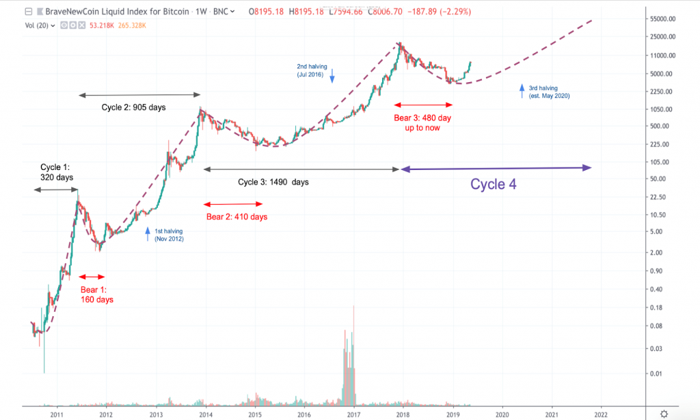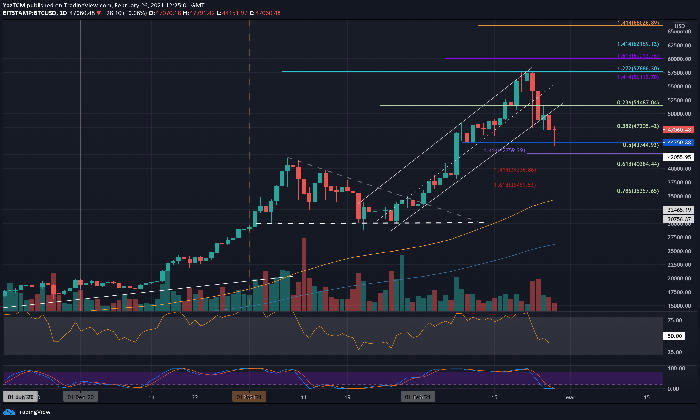The DeFi savings protocol, Sky, has recently made headlines with its latest financial results, highlighting the volatile nature of decentralized finance. Despite experiencing a significant loss of $5 million in the first quarter, down from a $31 million profit, the protocol aims to attract users by raising interest payments to savers by 102%. This appears to be a strategic move to promote its new stablecoin, USDS, amidst discussions on Ethereum DeFi trends and the performance of various digital assets. Co-founder Rune Christensen has provided insights into how the rising cryptocurrency savings rates might influence user engagement, yet questions remain about the sustainability of this approach. As the market watches closely, the implications of this shift might redefine savings expectations for investors looking for higher returns on their digital assets while grappling with shifting profit margins.
Sky’s decentralized finance (DeFi) savings platform has emerged as a focal point in recent cryptocurrency discussions, particularly surrounding sustainable savings models in the blockchain realm. Known for its innovative approach to yield generation, the protocol’s push to enhance its savings offerings—with the introduction of USDS—aims to capture a more sophisticated investor demographic. As it navigates the complexities of the cryptocurrency landscape, trends in Ethereum DeFi continue to shape insights on user adoption and engagement strategies. With savers now faced with varying interest rates, the performance juxtaposition between USDS and traditional assets has sparked widespread interest and debate. Indeed, these developments echo broader themes within the cryptocurrency savings landscape, reflecting the ongoing evolution of financial opportunities in the DeFi sector.
Understanding the DeFi Savings Protocol Sky
The DeFi savings protocol Sky has made headlines recently, primarily due to its significant financial shifts. The report of a $5 million loss in the first quarter stands in stark contrast to the impressive $31 million profit from the previous quarter. This sharp decline raises critical questions about its operational strategies and user base. The protocol’s approach to incentivizing savings through a high-interest rate is a double-edged sword; while rewarding savers may boost short-term engagement, it poses serious implications for long-term profitability.
Sky’s co-founder Rune Christensen emphasizes that their high initial savings rate of 12.5% attracted considerable deposits, a trend that many protocols strive for in the competitive DeFi landscape. However, as the interest rates climbed drastically, the balance between profitability and user acquisition started to tip. This highlights an essential aspect of DeFi protocols: the need to innovate without compromising sustainability. As Sky continues to navigate these waters, the implications of their financial strategies will be instrumental in shaping their future.
The Role of USDS Stablecoin in Sky’s Strategy
One of the key components of Sky’s strategy is the introduction of the USDS stablecoin, aimed at sophisticated investors looking for higher yields. With USDS offering a return of 4.5%, significantly higher than DAI’s 2.75%, it is poised to attract a different clientele in the DeFi ecosystem. However, despite the allure of higher returns, many traditional investors remain indifferent to the shift, reflecting a cautious approach to cryptocurrency savings rates in a volatile market.
Sky’s initiative to promote USDS as part of its broader Endgame plan is a crucial pivot towards achieving a diverse investor base. Yet, the protocol must grapple with the dependency on other platforms, such as Ethena, for growth in USDS supply. This raises concerns regarding the protocol’s ability to cultivate an independent and robust user ecosystem. As the demand for USDS remains uncertain, Christensen acknowledges the challenge of balancing attractive offers with the imperative of financial stability.
Analyzing Ethereum DeFi Trends Affecting Sky Protocol
Ethereum continues to dominate the DeFi space, and its trends greatly influence protocols like Sky. With Ethereum’s network being the backbone of many decentralized applications, its evolving landscape necessitates constant adaptation from strategies implemented by protocols. The rise in USDS’ popularity amid increasing Ethereum transaction volumes hints at a shift in user preferences that protocols must understand and cater to.
Moreover, Ethereum DeFi trends are often dictated by fluctuations in the wider cryptocurrency market. As user experiences and needs evolve, Sky must stay ahead by not only monitoring these changes but also actively participating in them. For example, enhancing USDS’s utility within the Ethereum ecosystem might bolster user adoption and signal sustainability, which is crucial during financially volatile periods.
Rune Christensen’s Insights into User Engagement
Rune Christensen’s perspective on user engagement provides vital insights into the challenges faced by DeFi protocols during periods of high-interest offerings. His remarks highlight the delicate balance between attracting new users with enticing rates and maintaining a viable business model. Sky’s approach to increasing savings rates is a classic example of how innovative strategies can backfire if not rigorously assessed in terms of profitability.
The engagement of users, particularly with new instruments like USDS, reflects broader market sentiments, which Christensen is keenly aware of. His commitment to refining this engagement strategy indicates that Sky is not merely reacting to market trends but is actively seeking to shape them. Understanding the motivations and behaviors of users is crucial for ensuring that DeFi offerings remain appealing without sacrificing financial health.
Navigating Losses: Lessons for DeFi Protocols
The recent financial loss experienced by Sky serves as a stark reminder for other DeFi protocols about the potential risks associated with aggressive strategies. While high-interest offerings can attract users quickly, they also jeopardize the long-term sustainability of these protocols. Lessons learned from Sky’s situation underline the need to create a more balanced approach that considers both user satisfaction and ongoing profitability.
Moreover, protocols must incorporate risk management strategies that account for variable market conditions, especially in the rapidly evolving DeFi space. Sharing these insights, as demonstrated by Christensen, can foster a more robust community of protocols willing to support one another in navigating the complexities of DeFi savings. In turn, this can lead to a healthier ecosystem that prioritizes not just user acquisition but sustainable growth.
Implications of Increased Interest Payments
Sky’s recent decision to ramp up interest payments to savers by 102% certainly spurred interest in their offerings, but this comes with significant implications for the protocol’s profitability. As highlighted, while raising interest rates can enhance user engagement, it also increases the financial burden on the protocol if those rates exceed what can be reliably earned from lending activities. This situation poses the risk of a perpetual cycle where higher rates necessitate even higher deposits to maintain fiscal health.
Such an approach could ultimately lead to a volatile financial situation for protocols like Sky. The importance of evaluating the direct correlation between interest rates and user behavior cannot be overstated. Moving forward, this realization may lead to a more calculated approach concerning interest offerings, with an emphasis on creating a stable environment conducive to sustainable profitability.
Future Outlook: What Lies Ahead for Sky Protocol
Looking ahead, the future for Sky Protocol hinges on its ability to adapt to the fluctuating DeFi landscape. The launch of USDS is a significant step towards diversifying the available options for users; however, the protocol must also ensure that it effectively markets this stablecoin to attract and retain users. The uncertainties surrounding user engagement and adoption strategies require a cautious yet innovative approach, with Sky leveraging lessons learned from its previous financial performance.
Moreover, the continued evolution of Ethereum and its implications for DeFi trends will play a crucial role in shaping what the future holds for Sky. By staying attuned to potential market shifts and user preferences, Sky can better position itself as a leading player within the DeFi space. Ultimately, the journey forward will depend on the protocol’s commitment to striking the right balance of user incentives and financial health.
The Challenge of Maintaining Competitive Cryptocurrency Savings Rates
In the fiercely competitive world of DeFi, maintaining appealing cryptocurrency savings rates while ensuring profitability is a formidable challenge. Sky’s recent spikes in interest rates, while aimed at attracting users, underscore the constant flux in this sector. With rates that can swing dramatically based on market conditions, protocols must find ways to remain relevant without overextending their financial capacity.
The juxtaposition of user expectations for high returns against the backdrop of sustainable business practices signifies a broader trend in the DeFi savings protocol landscape. As Sky and others simulate these competing pressures, striking a balance that meets user demand while supporting long-term viability will be paramount in navigating the future of decentralized finance.
Evaluating Success: Measurement Metrics for DeFi Protocols
As DeFi savings protocols like Sky navigate the challenges of growth and profitability, establishing clear metrics for success becomes essential. Beyond just tracking profits and losses, metrics such as user acquisition rates, retention, and the longevity of deposits provide a comprehensive view of a protocol’s health. For Sky, understanding the dynamics of its user engagement can inform future strategies to either bolster USDS adoption or redesign offerings altogether.
Furthermore, peer comparisons with other successful DeFi protocols can reveal valuable insights. By analyzing what drives user loyalty and capital inflows in a competitive landscape, Sky can adapt its offerings to better align with market demands. Continuous evaluation and iterative adjustments based on these metrics could serve as pivotal steps towards enhancing its competitive edge and ensuring sustainable growth.
Frequently Asked Questions
What recent news highlights the challenges faced by the Sky DeFi savings protocol?
The recent news reports indicate that the Sky DeFi savings protocol incurred a loss of $5 million in the first quarter, a significant decline from its $31 million profit in the previous quarter. This financial downturn has raised concerns about its sustainability and profitability.
How has the Sky DeFi savings protocol adjusted its interest rates for savers?
In response to its financial challenges, the Sky DeFi savings protocol has increased interest payments to savers by 102% to encourage them to use its new stablecoin, USDS, rather than sticking with DAI.
What is the expected impact of USDS on the Sky DeFi savings protocol’s user base?
The introduction of the USDS stablecoin aims to attract more sophisticated investors to the Sky DeFi savings protocol. However, there is uncertainty about whether it has significantly broadened the user base, as indicated by the fluctuating demand for the stablecoin.
What insights has Rune Christensen shared about the Sky DeFi savings protocol’s strategy?
Rune Christensen, co-founder of the Sky DeFi savings protocol, noted that the high initial savings rate of 12.5% led to substantial inflows, but the recent increase in interest payments may negatively affect profitability. He emphasizes the ongoing assessment of USDS’s role in engaging users while maintaining profit margins.
How does the interest rate of USDS compare to DAI in the Sky DeFi savings protocol?
Currently, investors can earn a higher return with the USDS stablecoin (4.5% interest) compared to DAI (2.75% interest). This better yield aims to incentivize users to prefer USDS over DAI, aligning with the Sky DeFi savings protocol’s strategic goals.
What questions arise regarding the financial sustainability of the Sky DeFi savings protocol?
Despite a rise of 57% in the total supply of USDS and DAI, much of this growth stems from other protocols like Ethena. This situation raises significant questions about the Sky DeFi savings protocol’s user base stability and long-term financial sustainability.
How does the Sky DeFi savings protocol plan to manage interest payouts going forward?
The Sky DeFi savings protocol might consider limiting the circulation of USDS in the market as part of its strategy, potentially leading to a decrease in interest payouts amid the challenge of balancing attractive rates with profit maintenance.
| Key Point | Details |
|---|---|
| Loss Reported | Sky reported a loss of $5 million in Q1, down from a $31 million profit in Q4. |
| Increased Interest Payments | Interest payments to savers increased by 102% to encourage the use of the new stablecoin, USDS. |
| USDS Launch | USDS was introduced to attract sophisticated investors but impact on user base remains uncertain. |
| Savings Rate Challenges | The initial high savings rate of 12.5% attracted inflows but is unsustainable due to profitability issues. |
| User Base Concerns | Although USDS and DAI supply increased by 57%, much of the growth came from other protocols, raising doubts about Sky’s sustainability. |
| Returns Comparison | Investors can earn 4.5% on USDS compared to 2.75% on DAI, though many used to lower yields seem hesitant. |
| Overall Strategy | Sky’s strategy may limit USDS circulation to decrease interest payouts, but balancing attractive rates with profitability is challenging. |
Summary
The DeFi savings protocol Sky has faced significant challenges in maintaining profitability amid increased interest payments and shifting user demands. Despite the launch of USDS to attract a more sophisticated investor base, the financial outlook remains uncertain as Sky navigates the complexities of competitive yields and profit margins. As Sky continues to assess the effectiveness of its strategies, further developments will determine whether it can build a sustainable ecosystem within the DeFi landscape.
In the evolving landscape of decentralized finance, the DeFi savings protocol Sky stands out with its audacious approach to yield generation. Recently, it reported a staggering $5 million loss in Q1, a stark contrast to the $31 million profit garnered in the previous quarter. The paradigm shift towards higher interest rates of 12.5% for savers was designed to promote its new stablecoin, USDS, aiming to outperform traditional options like DAI. However, this aggressive strategy raises questions about USDS stablecoin performance and its ability to sustain investor interest. With Ethereum DeFi trends and insights from co-founder Rune Christensen highlighting the need for balance, the protocol’s path toward profitability remains uncertain as it navigates through heightened savings rates and market demands.
In the world of decentralized finance, innovative saving solutions are more crucial than ever. Sky’s savings ecosystem, underpinned by its newly introduced stablecoin, positions itself as a key player in the DeFi sector. The recent financial struggles, coupled with surging interest rates for depositors, exemplify the challenges faced when trying to attract savvy investors while ensuring sustainable operations. As cryptocurrency savings rates fluctuate, attention turns to the long-term viability of this strategy, particularly in light of competitive trends influenced by Ethereum’s dynamic environment. Rune Christensen’s insights into this evolving market shed light on the complexities of attracting users while maintaining profitability amid such volatility.















